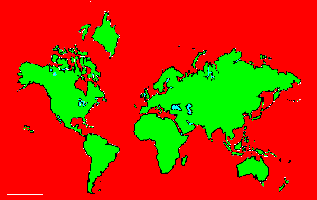SPECIES INFO
Scalloped ribbonfish (Zu cristatus) is found worldwide in warm oceans. This has been seen off southern California and south to Peru. This has also been seen from Bermuda into the Gulf of Mexico. This is a weird looking up to 40 inch fish with a large head and tapering body. The dorsal fin extends to the tail. There is a vertical crest over the eye at the beginning of the dorsal fin. The weird upright tail looks like an expended fan. There might be additional species in this genus, as very few specimens are in museums.The ribbonfish family (Trachipteridae) members are found primarily in deep ocean waters. There are quite a few species. The genera Trachipterus, Zu, and Desmodema belong here. Most members of the family have a dorsal fin that begins above the head and extends to the tail. Most family members are very flat.
This order contains a number of diverse families of marine fish. Included here is the opah (moonfish), crestfishes, ribbonfishes, and the oar fish. This order has a total of about 20 species. Most are silver with red fins. There is a nice series of colored drawings in Migdalksi that shows the diversity in this order.
Bony fish, Class Teleostomi, are a class of chordates that include the majority of fish-like animals found on earth. They are characterized by a bony jaw and a bony skeleton. They are found in both fresh and marine waters.
Backboned Animals (Phylum Chordata) are the most advanced group of animals on earth. These animals are characterized by having a spinal cord or backbone. Most members have a clearly defined brain that controls the organism through a spinal cord. Fish, amphibians, reptiles, birds, and mammals are in this phylum.
Currently, some taxonomists believe that the fish should be divided into two groups (sharks and regular fishes) and that there are some other primitive groups in the phylum such as hagfish or lampreys.
Animal Kingdom contains numerous organisms that feed on other animals or plants. Included in the animal kingdom are the lower marine invertebrates such as sponges and corals, the jointed legged animals such as insects and spiders, and the backboned animals such as fish, amphibians, reptiles, birds, and mammals.

